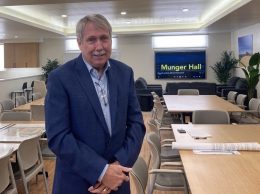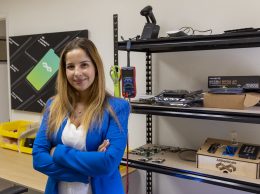Editorial: To become tech magnet, region should think big
UC Santa Barbara has taken a small step forward with the launch of its Goleta Entrepreneurial Magnet, or GEM, program, designed to link emerging companies with the adjacent Goleta Valley.
And we would agree with Goleta City Manager Dan Singer that, thanks in large part to UCSB spinoffs, Goleta tends to “punch above its weight” in creating high-tech jobs.
But we’d encourage UCSB to think bigger when it comes to the longterm effects of the startups it spins out and embrace a broader role along the entire Highway 101 corridor from the L.A. County line all the way to San Luis Obispo.
From Amgen and Teledyne in the southern part of the region to Hardy Diagnostics in Santa Maria — as well as countless startups in the San Luis Obispo area — the impact of UCSB is felt across the Tri-Counties. With the Technology Management Program master’s degree coming soon, UCSB will serve as a landing pad where talented college graduates from Cal Poly, California Lutheran University, Westmont College and CSU Channel Islands can come and incubate new ideas for putting science to work.
But it should not stop there. With their engineering — and particularly graduate engineering — programs, UCSB and, to a certain extent, Cal Poly, have unique roles to play in moving the Central Coast’s economy into the 21st century. In that regard, they play a role in shaping the future of science and technology for California, the nation and the world.
In remarks before the Public Policy Institute of California on May 7, outgoing UC system President Mark Yudof heralded the rise of UC Santa Barbara and UC Irvine to the top ranks of national and international institutions. He also described the UC system as needing to be in a state of continuous revolution that is fearless in terms of experimenting with new ideas.
We’d challenge UCSB brass to think beyond GEM to lead the entire regional economy in reshaping its efforts to focus on science and technology jobs. This will not be easy.
It will take a lot of work to convince Goleta and other communities to build the amount of affordable off-campus housing they will need to house a workforce comprised of successful companies spun off from UCSB.
It will take creative partnerships — including those with other public and private institutions — to encourage spinoff companies to take root in economically disadvantaged areas such as Oxnard and Santa Maria.
To the extent that the GEM program breaks through the internally-focused attitude that marks the recent history of UCSB during the budget crisis, it is a positive step forward. But echoing the thoughts of former Energy Secretary Steven Chu when he visited UCSB on May 1, UCSB needs to be bolder, think bigger, and move faster in connecting its world-class research to the broader economy.












